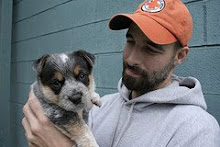The digital story I made is about PHSgeek, a project in which our students learn to refurbish donated computers. This project has already, in its first year, returned our school to a minimum level of functioning technology. Because of this project, we should be able to begin making digital stories with our students in the fall, and several students may pilot a digital story project as part of their final work this school year. If it were not for the PHSgeek project, we would have a difficult time helping students write, save, and print a simple paper.
While this video leaves a lot to be polished, I believe I have met the goals for this assignment. I have made several videos that combined still images with audio, but I have never edited a video from video clips. I used my rubric to evaluate this video, and I believe it lands right in the middle of the rubric. The topic is quite interesting to educators, who have often wondered if students could play a stronger role in maintaining school technology. However, there is more telling and describing than I'd like. It would be much stronger to show students doing the things that are described in the video. The technical aspects seem competent, with relatively smooth transitions and audio that matches the video segments. Most important, this work puts me in a position to begin leading our students and staff through their first digital stories next year, in a way that will produce final products much more polished than this one.

I have a clear plan for producing stronger videos with students and staff next year. The biggest obstacle this semester was having good raw footage. I would have had to re-stage significant scenes to have good footage, and I was not interested in staging fake scenes. One routine we will implement next year is to identify the situations we want to take raw footage of at the beginning of each class, and take that footage as those events happen. For example, when we advertise for new donations in the fall, we will film students talking on the phone with potential donors, and film people dropping off their computers. We will place a camera on a tripod and leave it running while several students begin their first installations, to capture short clips showing the genuine facial expressions of confusion and triumph that arise as students gain significant new understanding. The rubric for our videos next year will expect more as well, with a category such as "Uses Effective Footage". The strong category will say something like "uses meaningful footage taken during the life of the project being documented." I believe steps such as these will allow us to produce compelling videos that begin to tell the story of our school.
Overall, the use of digital stories can play a significant role in the development of our school culture. Our staff has a history of telling visitors the good things our students have done, without being able to show how students did these things. Effective digital stories will let our students' work speak for itself. As a final example, another interesting class we have is Rescue Physics. In this class students learn technical mountain rescue skills as a way of learning physical science concepts. The culminating project is a day on a cliff where students simulate a person getting stuck on the side of the cliff, and then rescue that person. Their performance is supervised and evaluated by local mountain rescue professionals, and they are evaluated by the same standards used to accredit mountain rescue teams internationally. This is perfect material for a compelling digital story, and next year digital stories will be an embedded part of the class.

No comments:
Post a Comment